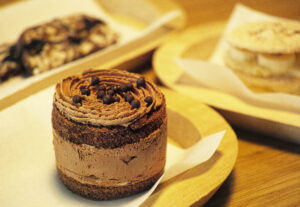Gluten-free baking has surged in popularity over the past decade, driven not only by the growing number of people diagnosed with celiac disease or non-celiac gluten sensitivity but also by those exploring alternative diets. Whether you’re new to this culinary world or a seasoned baker looking to refine your skills, mastering gluten-free recipes requires a blend of science, creativity, and patience. In this article, you’ll discover essential techniques, ingredient insights, and practical advice to elevate your gluten-free creations—from fluffy breads to decadent desserts—while avoiding common pitfalls. Let’s dive in!
Why Does Gluten-Free Baking Require Different Techniques?
Traditional baking relies heavily on gluten, a protein in wheat that provides structure and elasticity. Without it, gluten-free batters and doughs behave differently, often resulting in dense or crumbly textures if not handled properly. To achieve success, you’ll need to adapt your methods. For instance, increasing liquid content by 10–20% can counteract the dryness common in gluten-free flours. One baker, Sarah, shared how adding an extra tablespoon of almond milk transformed her muffin recipe from gritty to moist.
Another key technique is letting batters rest for 10–15 minutes before baking. This allows flours like rice or tapioca to fully absorb liquids, improving texture. Carbonated liquids, such as sparkling water, can also introduce air bubbles for lighter results. Imagine biting into a slice of bread that’s as fluffy as its gluten-containing counterpart—this simple swap makes it possible!
The Role of Hydration and Resting Time
Gluten-free flours often absorb moisture more slowly than wheat flour. By letting your batter rest, you give starches time to hydrate, which prevents a gritty mouthfeel. This step is especially crucial for cakes and quick breads. Similarly, chilling cookie dough for 30 minutes before baking helps fats solidify, reducing spread and enhancing flavor.
How to Choose the Right Gluten-Free Ingredients
Not all gluten-free flours are created equal. Almond flour adds richness and moisture but can make baked goods dense. Coconut flour, highly absorbent, requires extra eggs or liquids. Tapioca starch, on the other hand, lends chewiness to pizza crusts and breads. Many bakers opt for pre-mixed blends, which balance these properties. Xanthan gum, a common additive, mimics gluten’s binding ability—use ½ teaspoon per cup of flour for optimal structure.
Experimentation is key. For example, combining rice flour’s neutrality with potato starch’s lightness can yield a versatile all-purpose blend. Pro tip: Keep a notebook to track flour ratios and their outcomes—it’s a game-changer for consistency!
Mastering Texture: From Gritty to Glorious
Texture challenges are a top complaint in gluten-free baking. Binding agents like chia seeds, flaxseed, or psyllium husk can help. When mixed with water, these ingredients form a gel-like substance that holds batters together. For breads, psyllium husk is particularly effective, creating a stretchy dough that rises beautifully.
Don’t shy away from mixing flours. A blend of sorghum, oat, and buckwheat flours can produce a nutty, tender crumb in muffins. If your first attempt isn’t perfect, adjust the ratios incrementally. Remember, even small tweaks can lead to breakthroughs.
What Are the Secrets to Fluffy Gluten-Free Bread?
Airy, risen bread is possible without gluten—if you know the tricks. First, ensure your dough rises in a warm, draft-free environment. Yeast thrives at around 75–85°F (24–29°C). Letting the dough rise twice, as you would with traditional bread, enhances flavor and texture. One home baker, Mark, achieved his best loaf yet by placing the dough in a slightly warmed oven during proofing.
For cookies, chilling the dough isn’t just a suggestion—it’s a must. Cold dough spreads less, resulting in thicker, chewier cookies. This step also allows flavors to meld, making every bite more satisfying.
Common Gluten-Free Baking Mistakes (and How to Fix Them)
Dry, dense results often stem from insufficient liquid or overmixing. Gluten-free batters are delicate; fold ingredients gently to preserve air bubbles. Another pitfall is misjudging ingredient ratios. Always measure by weight for accuracy, as gluten-free flours vary widely in density. A kitchen scale is a worthwhile investment—it turned Emily’s rock-hard scones into tender delights overnight.
Lastly, don’t rush the process. Gluten-free baking demands patience, from resting batters to cooling baked goods completely before slicing. A warm knife might seem tempting, but waiting ensures your bread won’t collapse.
Delicious Gluten-Free Recipe Ideas to Try at Home
Why limit yourself? Gluten-free baking can cater to vegan, keto, and paleo diets with simple swaps. Try aquafaba (chickpea brine) as an egg substitute in meringues, or almond flour for a low-carb pie crust. Adapting traditional recipes is easier than you think—replace regular flour with a 1:1 gluten-free blend and adjust liquids as needed. Download our free recipe card for a crowd-pleasing gluten-free chocolate cake that’s also dairy-free!
The Growing Gluten-Free Market: What’s Next?
The gluten-free market, valued at USD 1.75 billion in 2023, is projected to reach nearly USD 3.40 billion by 2030. North America leads this growth, driven by increased awareness and product innovation. From cauliflower pizza crusts to protein-packed lentil pasta, the industry shows no signs of slowing down. For home bakers, this means more accessible ingredients and inspiration than ever before.
Final Thoughts
Gluten-free baking is both an art and a science, requiring adaptability and curiosity. By understanding ingredient properties, refining techniques, and learning from mistakes, you’ll unlock a world of delicious possibilities. Whether you’re baking for health reasons or culinary exploration, remember: every batch is a step toward mastery. Ready to preheat your oven? Grab your apron, experiment fearlessly, and join the thriving community of gluten-free bakers. Your next showstopping creation awaits!



